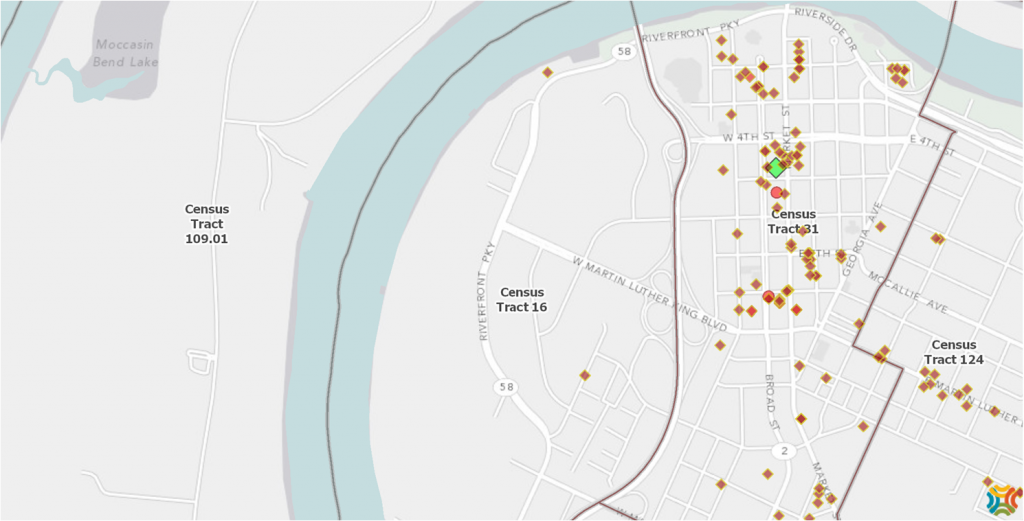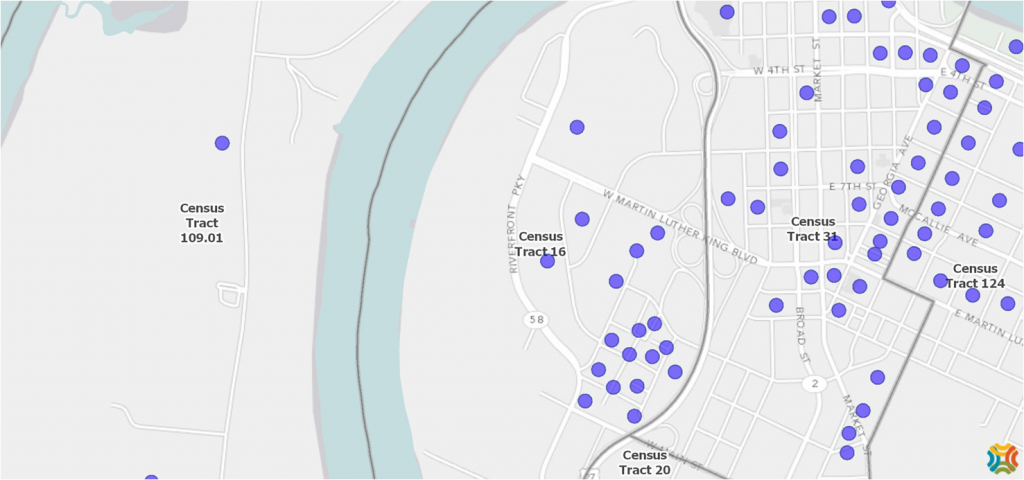A few observations from my trip to Vanguard Next City Conference in Chattanooga, TN
Here is a quick summary of the what, why, who and when:
During April 24th-26th, I was in Chattanooga, Tennessee attending the 5th Annual Vanguard Conference, an experiential urban leadership gathering of 40 of the best and brightest urban leaders under 40, hosted by the national non-profit media organization Next City. Mind you, I’m probably the least accomplished of this excellent group of 40 promising leaders, all of them working to improve cities across sectors, including urban planning, community development, entrepreneurship, government, transportation, sustainability, design, art and media. We convened in Chattanooga for a three-day series of presentations, workshops and neighborhood tours. The Vanguard conference will culminate in the Chattanooga Challenge, an ideas competition sponsored by the Footprint Foundation and designed to jump-start civic local innovation through a $10,000 grant for the winning proposal.
Here are a handful of observations from this conference:
- In a nutshell, it was a life altering experience. I got to learn so many issues associated with urban development, such as housing and economic issues, while further understanding the linkages and the crucial role of transportation systems in building a better urban environment.

Image Courtesy: metrojacksonville,com
- Met some of the best and brightest in the country and was in awe from the time I arrived till I left the city (even now I’m in awe of how much knowledge was exchanged and free flowing in that setting).

Image Courtesy: metrojacksonville.com
- When you adopt an unconference format, discussions flow freely and people are at ease to share their ideas. Moral of the story: do not host events featuring powerpoint presentations. The conversations were engaging, stimulating and at times downright wild (particularly those conversations over the beers and coffees were excellent).

Image Courtesy: Metrojacksonville.com

Image Courtesy: metrojacksonville.com. A lot of beverages consumed and tons of knowledge exchanged.

image courtesy: metrojacksonville.com. Did I tell you it was wild and fun?

Image courtesy: metrojacksonville.com. Opening night party on the premises of the Aquarium building.
- People in the government at local levels work together and even when they work together to solve problems they are constrained by institutional biases and money shortfall. The city owns a strategic piece of digital infrastructure – Chattanooga offers the fastest Internet connections in America through the city-owned fiber-optic network.
- City of Chattanooga is a great place and certain parts of it, like in most urban areas, has bad things going on. As part of the Vanguard Conference’s Chattanooga Challenge, we were all divided into four groups and sent to explore different corners of the the city (East, West, North and South) by foot, bikes and transit. I was part of the walking tour (Team West) that hit the West side and got to see up close the economic disparities that exist on either side of a major elevated highway (U.S. 27) that literally bifurcates the communities more details on the West Side tour in a different bullet below).

Image Courtesy: metrojacksonville.com. Team West, posing for a picture, moment before announced as Winners of the $10k Chattanooga Challenge.
- City of Chattanooga has a great bikeshare system, fantastic aquarium and an excellent set of touristy things like the historic Chattanooga Choo Choo Hotel (pictured below), great restaurants and watering holes across the town.

Image Courtesy: Metrojacksonville.com. Click image to see an entire set of image from a fellow Vanguard, Ennis Davis at Metro Jacksonville
- The city’s low-income residents, particularly those in the West side neighborhoods such as College Hill courts, are somewhat caught in a bad situation. These communities, slated for redevelopment within a decade or so, live quite close to the economic heart of the city. But they do not have a meaningful direct access where they can walk to their jobs and they are cut off by a major thorough fare. This has resulted in poverty and the usual accompaniments of crime and lack of education. I was part of the Team West in the Chattanooga Challenge that visited these communities and pitched a strong proposal to connect the divided communities. Our team, bolstered by three strong local young leaders, gained very illuminating insights that helped us understand the situation at hand. We suggested that the City of Chattanooga offer free Wi-Fi service to a public housing community on the city’s west side and develop a new pathway to connect the city’s downtown to the highway-marooned neighborhood. I’m borrowing the narrative from Next City to explain how this is laid out: Right now, area residents, (shown in image below total population of 2481 with a median income of $9277) many of whom are children and downtown workers commuting from public housing developments to school or jobs in other parts of the city, must trek by foot on a dirt path and across highway ramps to reach the city’s center. Where the path enters their neighborhood, residents must pass through a hole in a chain-link fence. Our teammate Marlon Brown, a city councilman from Mason, Michigan put it succinctly “the neighborhood is physically divided from the downtown at the same time as it is digitally divided from opportunities there. You have to remember, a city is only as strong as its least connected neighborhood. ” These next two images below came from our teammate John Bilderback, who quickly generated them to show how this community is strategically located and yet remains far removed from better opportunities. What’s better – our winning idea will get a $10,000 boost from the local Footprint Foundation and the City will get to implement the proposal. And the local newspaper did an excellent article covering our winning proposal. Yay!
-

Image Courtesy: John Builderback. Picture1 – Westside – Where the Resources are.

- Last but not least I got to ride a bicycle after almost 15 years. I am a regular transit user living in Washington, DC metropolitan area, where we are blessed with better transportation alternatives and a fantatistic world-class bikesharing system. But I never had a reason to ride a bike because of my living and commuting options. Thanks to Chatanooga and my fellow Vanguards, I got to commandeer a bicycle one afternoon. It was a lot of fun and I reached my destination without embarrassing myself and an exciting story to tell (yeah, our group got yelled at by an older gentleman in a pickup for occupying a full lane on a main thoroughfare). Sadly, despite the presence of a bikeshare system in the city, the number of bicyclists on the city streets were relatively low.






















